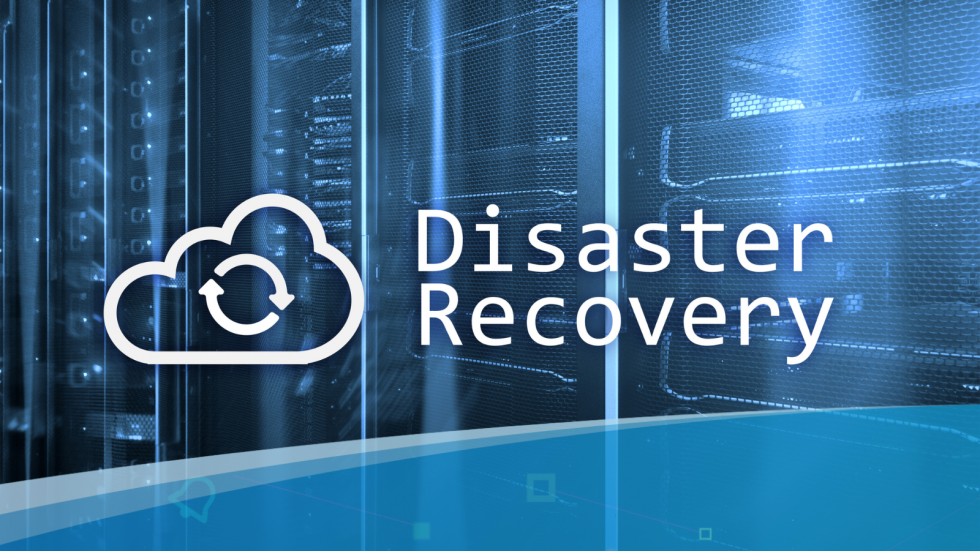Published on 29 July 2021
There are many different types of disasters that can occur within an organisation. Having effective IT Support and Disaster Recovery in place is the best way to ensure your company is protected if a disaster occurs.
Many types of disasters could be damaging to your business. Natural disasters include floods, fires, hurricanes, and earthquakes. There are many repercussions of natural disasters, like water damage or building collapses, which is why having a detailed plan of action is vital. Other disasters that could transpire include:
– Power outages
– Hardware failures
– Cyber-attacks, like Ransomware Attacks
– Sabotage
– Industrial Accidents
Any of these could be harmful to your business and lead to reputational damage. By not having strong IT support or a Disaster Recovery Plan in place you are putting yourself, your business, and your customers at risk.

Disaster Recovery or a Disaster Recovery Plan is a set of instructions to limit the downtime of a business’s critical IT systems and data in the event of a disaster. Most businesses will perform an in-depth analysis of their systems and create a formal document to follow. If you have strong IT support in place this should be top of their list, if you are unsure or would like advice on the best plan to follow all you have to do is contact us today.
While Business Continuity and Disaster Recovery plans may seem similar, Disaster Recovery is IT-focused. Its focal point is the IT systems that allow your business to continue to function as soon as possible after a disaster. Because of this, you will need to create and test your Disaster Recovery Plan a minimum of every six months. Think of it like a fire drill: you need to test your company’s procedures to get everyone safely out of the building. The same approach should be taken for your IT and Disaster Recovery Plan.
There are two main areas of Disaster Recovery you will need to focus on:
– Recovery Point Objective (RPO)
o The point in time that your data is backed up. This could be every evening or every hour or even once a week.
– Recovery Time Object (RTO)
o The amount of time it will take for your data to be restored before you and your employees can continue to work.
Both RPO and RTO need to be considered. How often you backup your data and how long it will take to restore depends on how much money you are willing to invest and how valuable having the most up-to-date data is for your business. It’s important to regularly speak to your IT support team to ensure that they carry out regular Disaster Recovery Testing and your RPO and RTO are in line with what you and your business want. Speak to an expert today to discuss the best Disaster Recovery Plan or RPO and RTO policy for your business.
You never know what or when a disaster could strike and affect your business, having correct recovery measures in place will save your business from:
– Monetary losses
– Data losses
– Reputational Damage
– Frustrated Customers
– Loss Of Customers
Setting up a Disaster Recovery plan allows your business to be up and running again as soon as possible and with minimal data losses. Meaning even if you are faced with a disaster, rather than it being detrimental to your business you can continue operations with reduced downtime. The world is becoming more fast-paced than ever and customers expect perfection and have little patience for delays due to disasters.
For example, if your business becomes the victim of a ransomware attack and your important data is being held hostage, you will be able to contact your IT support to restore your data onto your employees’ computers with minimal downtime, data losses, and financial losses. You may even be up and running before your customers notice. Whereas without proper IT support or a Disaster Recovery plan you may be faced with days of downtime trying to recover losses and in the process losing both loyal and new customers.
Over 2020 and 2021, the IT leaders in the US and UK reported a 43% increase in data outages, coupled with Acronis’s statistic that on average a business will spend about 200 minutes resolving an IT issue, can you afford not to have a Disaster Recovery Plan in place?
Acronis, Microsoft, and Skykick are partners with Bluebell, and each provides a different kind of Disaster Recovery service:
– Acronis provides a backup and Disaster Recovery service
– Microsoft provides customisable solutions with Disaster Recovery in mind
– Skykick provides back-ups for Microsoft 365, SharePoint, and Exchange Online
Call us now to speak to one of our experts about the best Disaster Recovery for your business 01908 044202.

© 2024 Bluebell IT Solutions - All rights reserved
SEO and Website Design by Loop Digital